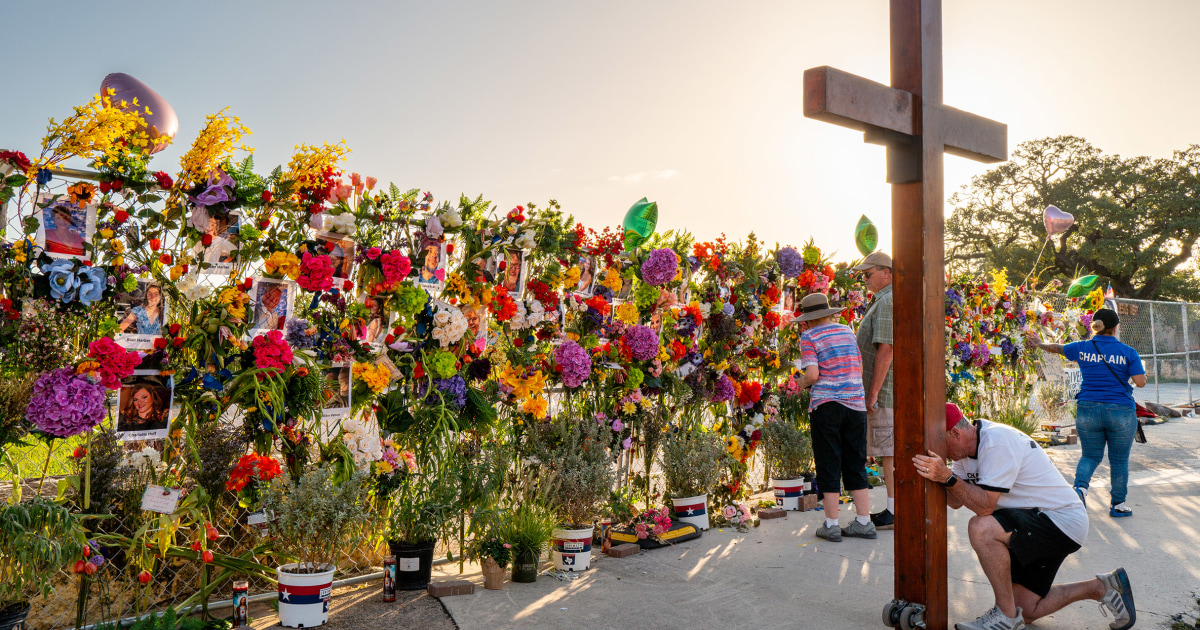Science
Why Cameras Are Popping Up in Eldercare Facilities

The assisted-living facility in Edina, Minn., where Jean H. Peters and her siblings moved their mother in 2011, looked lovely. “But then you start uncovering things,” Ms. Peters said.
Her mother, Jackie Hourigan, widowed and developing memory problems at 82, too often was still in bed when her children came to see her in mid-morning.
“She wasn’t being toileted, so her pants would be soaked,” said Ms. Peters, 69, a retired nurse-practitioner in Bloomington, Minn. “They didn’t give her water. They didn’t get her up for meals.” She dwindled to 94 pounds.
Most ominously, Ms. Peters said, “we noticed bruises on her arm that we couldn’t account for.” Complaints to administrators — in person, by phone and by email — brought “tons of excuses.”
So Ms. Peters bought an inexpensive camera at Best Buy. She and her sisters installed it atop the refrigerator in her mother’s apartment, worrying that the facility might evict her if the staff noticed it.
Monitoring from an app on their phones, the family saw Ms. Hourigan going hours without being changed. They saw and heard an aide loudly berating her and handling her roughly as she helped her dress.
They watched as another aide awakened her for breakfast and left the room even though Ms. Hourigan was unable to open the heavy apartment door and go to the dining room. “It was traumatic to learn that we were right,” Ms. Peters said.
In 2016, after filing a police report and a lawsuit, and after her mother’s death, Ms. Peters helped found Elder Voice Advocates, which lobbied for a state law permitting cameras in residents’ rooms in nursing homes and assisted-living facilities. Minnesota passed it in 2019.
Though they remain a contentious subject, cameras in care facilities are gaining ground. By 2020, eight states had joined Minnesota in enacting laws allowing them, according to the National Consumer Voice for Quality Long-Term Care: Illinois, Kansas, Louisiana, Missouri, New Mexico, Oklahoma, Texas and Washington.
The legislative pace has picked up since, with nine more states enacting laws: Connecticut, North Dakota, South Dakota, Nevada, Ohio, Rhode Island, Utah, Virginia and Wyoming. Legislation is pending in several others.
California and Maryland have adopted guidelines, not laws. The state governments in New Jersey and Wisconsin will lend cameras to families concerned about loved ones’ safety.
But bills have also gone down to defeat, most recently in Arizona. In March, for the second year, a camera bill passed the House of Representatives overwhelmingly but failed to get a floor vote in the State Senate.
“My temperature is a little high right now,” said State Representative Quang Nguyen, a Republican who is the bill’s primary sponsor and plans to reintroduce it. He blamed opposition from industry groups, which in Arizona included LeadingAge, which represents nonprofit aging services providers, for the bill’s failure to pass.
The American Health Care Association, whose members are mostly for-profit long-term care providers, doesn’t take a national position on cameras. But its local affiliate also opposed the bill.
“These people voting no should be called out in public and told, ‘You don’t care about the elderly population,’” Mr. Nguyen said.
A few camera laws cover only nursing homes, but the majority also include assisted-living facilities. Most mandate that the resident (and roommates, if any) provide written consent. Some call for signs alerting staff and visitors that their interactions may be recorded.
The laws often prohibit tampering with cameras or retaliating against residents who use them, and include “some talk about who has access to the footage and whether it can be used in litigation,” added Lori Smetanka, executive director of the National Consumer Voice.
It’s unclear how seriously facilities take these laws. Several relatives interviewed for this article reported that administrators told them that cameras weren’t permitted, then never mentioned the issue again. Cameras placed in the room remained.
Why the legislative surge? During the Covid-19 pandemic, families were locked out of facilities for months, Ms. Smetanka pointed out. “People want eyes on their loved ones.”
Changes in technology probably also contributed, as Americans became more familiar and comfortable with video chatting and virtual assistants. Cameras have become nearly ubiquitous — in public spaces, in workplaces, in police cars and on officers’ uniforms, in people’s pockets.
Initially, the push for cameras reflected fears about loved ones’ safety. Kari Shaw’s family, for instance, had already been victimized by a trusted home care nurse who stole her mother’s prescribed pain medications.
So when Ms. Shaw, who lives in San Diego, and her sisters moved their mother into assisted living in Maple Grove, Minn., they immediately installed a motion-activated camera in her apartment.
Their mother, 91, has severe physical disabilities and uses a wheelchair. “Why wait for something to happen?” Ms. Shaw said.
In particular, “people with dementia are at high risk,” added Eilon Caspi, a gerontologist and researcher of elder mistreatment. “And they may not be capable of reporting incidents or recalling details.”
More recently, however, families are using cameras simply to stay in touch.
Anne Swardson, who lives in Virginia and in France, uses an Echo Show for video visits with her mother, 96, in memory care in Fort Collins, Colo. “She’s incapable of touching any buttons, but this screen just comes on,” Ms. Swardson said.
Art Siegel and his brothers were struggling to talk to their mother, who, at 101, is in assisted living in Florida; her portable phone frequently died because she forgot to charge it. “It was worrying,” said Mr. Siegel, who lives in San Francisco and had to call the facility and ask the staff to check on her.
Now, with an old-fashioned phone installed next to her favorite chair and a camera trained on the chair, they know when she’s available to talk.
As the debate over cameras continues, a central question remains unanswered: Do they bolster the quality of care? “There’s zero research cited to back up these bills,” said Clara Berridge, a gerontologist at the University of Washington who studies technology in elder care.
“Do cameras actually deter abuse and neglect? Does it cause a facility to change its policies or improve?”
Both camera opponents and supporters cite concerns about residents’ privacy and dignity in a setting where they are being helped to wash, dress and use the bathroom.
“Consider, too, the importance of ensuring privacy during visits related to spiritual, legal, financial or other personal issues,” Lisa Sanders, a spokeswoman for LeadingAge, said in a statement.
Though cameras can be turned off, it’s probably impractical to expect residents or a stretched-thin staff to do so.
Moreover, surveillance can treat those staff members as “suspects who have to be deterred from bad behavior,” Dr. Berridge said. She has seen facilities installing cameras in all residents’ rooms: “Everyone is living under surveillance. Is that what we want for our elders and our future selves?”
Ultimately, experts said, even when cameras detect problems, they can’t substitute for improved care that would prevent them — an effort that will require engagement from families, better staffing, training and monitoring by facilities, and more active federal and state oversight.
“I think of cameras as a symptom, not a solution,” Dr. Berridge said. “It’s a Band-Aid that can distract from the harder problem of how we provide quality long-term care.”
The New Old Age is produced through a partnership with KFF Health News.

Science
The mother of an L.A. teen who took his own life is fighting for a new mental health tool for LGBTQ+ youth

Bridget McCarthy believes that if her son Riley Chart had quick and easy access to a suicide prevention hotline designed for queer young people, he might be alive today.
Chart, a trans teen who had once endured bullying because he was different, took his own life at the family’s home during the COVID-19 lockdown in September 2020 — two weeks after his 16th birthday.
“I truly believe that had there been an LGBTQ-specific [help] number right in front of him, he would’ve tried it,” McCarthy said.
Riley Chart with his mother Bridget McCarthy.
(Paul Chart)
State lawmakers are set to vote in August on a bill that McCarthy and its sponsors say could save the lives of other young queer Californians.
California Assembly Bill 727 would require ID cards for public school students in grades 7 through 12 and students at public institutions of higher education to list the free LGBTQ+ crisis line operated by The Trevor Project on the back, starting in July 2026.
The Trevor Project is a West Hollywood-based nonprofit that the federal government cut ties with when it eliminated funding for LGBTQ+ counseling through the National Suicide and Crisis Lifeline (9-8-8). The lifeline was expected to stop routing crisis calls to The Trevor Project and six other LGBTQ+ contractors Thursday. It’s one of several actions in the second Trump administration that critics fear will roll back years of progress of securing health-care services for queer Americans.
“When the Trump administration threatened and then went through with their threat to cut the program completely, that told us that we had to step up to the plate,” said Democratic Assemblymember Mark González of Los Angeles, who said he introduced the legislation to ensure that queer youth receive support from counselors who can relate to their life experiences. “Our goal here is to be the safety net — especially for those individuals who are not in Los Angeles but in other parts of the state who need this hotline to survive.”
California Lt. Gov. Eleni Kounalakis, the L.A. LGBT Center and the Sacramento LGBT Center all have signed on as co-sponsors of the bill. Gov. Gavin Newsom told Politico the Trump administration’s 9-8-8 decision was “indefensible” and that he also backs the bill. His office said the state’s $4.7 billion Master Plan for Kids’ Mental Health includes partnerships with organizations such as The Trevor Project.
González said the bill originally included private schools but in response to conservative opposition, the mandate was amended so it would be limited to public schools.
With federal funding for the LGBTQ+ crisis counselors who field calls through the 9-8-8 lifeline running out on Thursday, local nonprofits and elected officials have vowed to fill the void. L.A. County Supervisors Janice Hahn and Lindsey P. Horvath authored a motion to explore the impact of the cut and see whether the county can help to continue the service. The board unanimously approved it Tuesday.
“The federal government may be turning its back on LGBTQ+ people, but here in L.A. County we’ll do everything within our power to keep this community safe,” Hahn said in a statement after the vote.
About 40% of young queer people in the U.S. have seriously contemplated suicide compared to 13% of their peers, according to a teen mental health survey published last fall by the U.S. Centers for Disease Control and Prevention. The Trevor Project and other organizations have reported a rise in the number of people calling crisis lines to seek mental health support, both in California and nationwide.
Trans Americans have been particularly shaken by the backlash against LGBTQ+ people and by the prospect of new restrictions on gender-affirming healthcare, according to new findings published this week by researchers at the University of Vermont.
Their survey of 489 gender-diverse adults after the 2024 election, published Wednesday in JAMA Open Network, found that nearly a third of those interviewed would consider risky DIY hormone therapies if treatments disappear elsewhere. A fifth of respondents reported having suicidal thoughts.

Riley Chart with his father, Paul Chart.
(Bridget McCarthy)
As the mother of a trans child who died from suicide, McCarthy said she wants to use the lessons she’s learned to educate and advocate for other trans young people and their families in similar situations.
McCarthy, who lives in Culver City, has started a memorial fund with The Trevor Project, organized suicide prevention walks in West L.A. and attended Pride festivals to hand out crisis line information.
She remembers Riley as an artistic and warmhearted son who joined LGBTQ+ groups and built a network of friends while attending high schools in both Santa Monica and Culver City.
Riley had a therapist for support living as a trans teen, but during the pandemic, he found it hard to cope with not being able to spend time in person with his friends. The confinement made him increasingly irritable. He was staying up later than usual and spending excessive time on his phone, McCarthy said.
After Riley died, the family discovered that he’d texted a gay friend for help.
“The only other number in his phone was a 10-digit veterans hotline number — that he did not call,” McCarthy said. “That’s why you have to have a lifeline that speaks to different populations. A veterans hotline will not work for a 16-year-old kid who’s struggling with their identity.”
When Riley was 12, McCarthy took him to the Pride parade in West Hollywood hoping that he would experience the feeling of belonging that he seemed to yearn for. He loved it.

Riley Chart attending West Hollywood Pride in 2017.
(Bridget McCarthy)
“Ry said he’d found his people,” McCarthy recalls, using the family’s nickname for him. “He was like, ‘This is it — I’m home, mom.’”
When Riley’s mother took him to Pride a second time the following year, he bought a trans pride flag that became one of his prized possessions. “He was wrapped in it when he went, when he left us,” McCarthy said.
McCarthy spoke by phone from one of Riley’s favorite places, Lummi Island in Washington state, near the U.S.-Canada border. The family laid Riley’s remains on the island and McCarthy goes to visit the grave site four times a year to care for the maple tree planted in his memory, admire the painted stones his friends placed around it and talk to her son.
McCarthy said she and Riley visited family friends on the island almost every year when he was younger. Especially during middle school when he faced bullying from classmates and issues over which restroom to use, the island served as a refuge where McCarthy saw her son at his most carefree. He loved climbing trees, swimming and herding cows, far from the pressures of being a kid in L.A.
“When you’d open the car door, it was just like opening the barn gate,” McCarthy remembers. “Like a colt across a field, he would just run. It gave us a chance for some peace.”
Science
Foreign, feral honeybees are crowding out native bee species in southern California

You’ve probably heard the phrase: “Save the bees.” But new research suggests we may need to be more specific about which bees we’re saving.
Europeans introduced western honeybees (Apis mellifera L.) to the Americas in the early 1600s. They play an essential role in pollinating crops and flowering plants, and are often hailed as the “unsung heroes of our planet.” They are both omnivorous and omnipresent: Researchers have found that western honeybees visit more plant species than any other species of pollinator and are the most common visitor to plants in non-managed habitats worldwide, accounting for nearly 13% of all floral visitors.
The problem is that this dominance may be coming at the cost of some native pollinators.
That’s what caught the attention of Joshua Kohn, a former biology professor at UC San Diego. “Pollination biologists in general in North America tend to ignore western honeybees because they’re not native,” he said. “But when I saw just how abundant they were, I thought to myself: They’re not just a nuisance, they’re the story.”
In San Diego County — a global bee biodiversity hotspot — feral honeybee populations have quietly exploded in number since the late 1960s. Many of these bees trace their ancestry to a hybrid of European and African subspecies, the latter known for traits that boost survival in hot, dry climates — places with mild winters and vegetation that blooms year-round. In other words, perfect for Southern California, where previously domesticated populations became feral colonies that thrived independent of human management, nesting in rock crevices, abandoned rodent burrows and other natural cavities.
However, despite their population growth and spread, researchers don’t know much about these bees’ pollen consumption, or the extent to which their foraging habits may be displacing native species.
A new study published July 7 in the journal Insect Conservation and Diversity seeks to address that knowledge gap. Drawing from field surveys in San Diego’s coastal scrubland, researchers at UC San Diego found that feral honeybees — non-native, unmanaged descendants of domesticated bees — may be monopolizing local ecosystems and effectively squeezing out native pollinators such as bumblebees. In total, these feral bees now comprise about 90% of all bees in the area, according to the study.
“It’s like going to the Amazon rainforest to bird-watch and seeing only pigeons,” said James Hung, an ecologist at the University of Oklahoma and co-author of the study. “I was shocked. This was supposed to be a biodiversity hotspot — but all we were seeing were honeybees.”
The team also wanted to understand how honeybee foraging affected pollen availability for native species, and what that might mean for the latter’s ability to reproduce successfully. The researchers looked at how honeybees interacted with three native plants: black sage, white sage and distant phacelia. They found that in just two visits, a western honeybee could remove more than 60% of the pollen from these flowers. By the end of a single day for all three plant species analyzed, more than 80% of all pollen was gone.
The problem is that this leaves almost no pollen for native bees.
Kohn, a co-author of the study, explained that while western honeybees are prolific foragers, they aren’t always the most effective pollinators. His previous research suggests plants pollinated by these bees often produce less fit offspring, in part due to inbreeding. This is because western honeybees tend to visit many flowers on the same plant before moving on — a behavior that increases the risk of self-fertilization.
What this means for the broader plant community is still unclear, Kohn said. “But it’s likely that the offspring of plants would be more fit if they were pollinated by native pollinators. It’s possible that if honeybees were not in the system that there’d be more bumblebees, which visit flowering plants much more methodically.”
Kohn emphasized that the findings aren’t an argument against honeybee conservation, especially given their importance to agriculture. However, they do suggest we may need to reconsider how to manage domesticated western honeybee populations.
When used for agricultural pollination, managed honeybees are often brought into an area temporarily in what’s called a mobile apiary: essentially, dozens or hundreds of hives kept on a trailer or platform, moved from place to place, wherever pollination is needed. While this is essential for crops, stripping nectaring plants of resources before native species have a chance to feed could lead to their decimation.
Hung suggested designating specific forage zones for commercial beekeeping — ideally in areas less vulnerable to ecological disruption — as a way to offset that pressure. “If we can identify ecosystems that are less sensitive to disturbance — those with a lower number of endemic plant or pollinator species — we could scatter seed mixes and produce way more flowers than any comparable habitat nearby,” he said. “Then, we could set aside some acres of land for beekeepers to come and park their bees and let them forage in a way that does not disrupt the native ecosystem. This would address the conflict between large-scale managed honeybee populations and the wild bees that they could potentially be impacting.”
Rather than replacing crop pollination, the idea would be to offer alternative foraging options that keep honeybees from spilling into and dominating natural areas.
Longer-term, Hung said scientists may need to consider more direct forms of intervention, such as relocation or eradication. “Honeybees have dug their roots very deep into our ecosystem, so removing them is going to be a big challenge,” he said. But at some point, he believes, it may be necessary to protect native plants and pollinators.
In the words of Scott Black, director of the Xerces Society for Invertebrate Conservation, “Keeping honeybees to ‘save the bees’ is like raising chickens to save birds.”
Science
Will personal firefighting devices help or hurt in future wildfires?

Patrick Golling yanked the pull cord, and the Honda engine roared to life. Seconds after it began sucking water out of his father’s pool, a powerful stream erupted from an agricultural irrigation nozzle fixed atop a bright red pole a few feet away, connected with a fire hose.
In a minute flat, the system meticulously jerked across the landscape, drenching the ravine in 50 gallons of water. The demonstration on a hot July afternoon left the blackened sticks below the property — once trees before the Palisades fire ripped through — dripping with chlorinated water.
The contraption is the brainchild of Golling and Arizona engineer Tony Robinson. After a TV interview where Golling discussed a cobbled-together version of the tech that he says saved his father’s home from the Palisades fire, Robinson cold-called him, and Realize Safety was born.
Now, the two talk of ambitious visions where entire neighborhoods living amid California’s rugged brush-covered landscapes band together to create a community defense network of automated firefighters.
Realize Safety’s defenders use an agricultural irrigation nozzle to spray 50 gallons of water per minute on surrounding vegetation.
(Allen J. Schaben / Los Angeles Times)
Their system is the latest entrant in a growing group of often-expensive, high-tech sprinkler systems designed to protect homes in high fire hazard areas. But while a blue-ribbon commission after the January fires recommended L.A. adopt exterior sprinkler technology, some fire officials warn there’s limited evidence that these elaborate and flashy systems work.
Instead, they say the systems distract from less-glamorous but proven measures to protect homes, such as brush clearance and multipaned windows, while encouraging residents to risk their lives by staying back during an evacuation to protect their homes.
“Good solutions don’t pop up overnight,” said David Barrett, executive director of the Los Angeles Regional Fire Safe Council. “There is no silver bullet.”
Especially for a vicious blaze such as the Palisades fire. Given the extreme weather conditions — winds over 80 mph, incredibly dry vegetation — there was very little firefighters, let alone home defense systems, could do, Barrett said.
“It doesn’t matter what you’ve got in your pool,” he said. “Nothing is going to stop an urban wildfire from progressing if it’s wind-driven — sorry. That’s the end.”
Asked whether the system saved his father’s home, Golling did not mince words: “Absolutely.”

Patrick Golling of Realize Safety adjusts the nozzle on one of the company’s defenders.
(Allen J. Schaben / Los Angeles Times)
After Golling got word of a fire developing in the Palisades on Jan. 7, he immediately thought of the gas pump and irrigation sprinkler system his father had bought just months before to protect his home in the Palisades Highlands. Golling rushed to his father’s house and spent the next two days deploying the system throughout the neighborhood, putting out spot fires that threatened the development. Golling said firefighters encouraged him to keep up the work as they struggled to contain monster blazes one neighborhood over.
As the smoke settled, most of Golling’s neighborhood remained standing.
But little data exist on the effectiveness of home defense sprinklers.
Wildfire researchers often use large datasets of destroyed and standing homes after devastating fires to compare the success of the various home hardening strategies they used. But scientists have yet to identify and analyze fires where sprinkler systems were widely used.
Some anecdotal evidence has suggested that these systems provide some protection. An analysis of the 2007 Ham Lake fire in Minnesota found that of 47 homes identified with functioning sprinkler systems, all but one survived. Meanwhile, only about 40% of the 48 homes without the systems remained standing after the fire.
Typical home defense sprinkler systems work by drawing water from utility systems, and using it to wet the exterior of a house and create — at least theoretically — another barrier from fire. Realize Safety’s goal is to prevent the fire from even reaching the house by dousing nearby vegetation in water and creating a mist to dampen any embers that could ignite the home. To do it, they’re tapping into an underutilized source of water: pools.
Barrett said that, without a doubt, firefighters could put pool water to better use than these systems. Firefighters, he said, already have all the equipment they need to utilize pool water, and all residents have to do is install a clear sign out front letting firefighters know they have a pool.
But as Golling looked at the view of the Palisades from his father’s backyard in early July, he counted eight destroyed homes with still-full pools.
“We think — that had they had a system in place like the one we’re talking about — they could have saved their homes,” Golling said.
Utility water sources are not designed to handle large-scale urban fires. During the Palisades fire, the chief engineer for the city’s water utility told The Times that the system saw four times the normal water demand for 15 hours straight.
It’s in part why, when an independent 20-member Blue Ribbon Commission on Climate Action and Fire-Safe Recovery recently issued dozens of recommendations for rebuilding and recovery, it called for prioritizing additional water storage capacity in neighborhoods and encouraging the development of standards for and the installation of systems that draw on water stored in pools or cisterns, with external sprinklers to douse homes.
Using a 20,000-gallon pool, Realize Safety’s system can run for over six hours straight. And unlike many traditional water defense sprinklers, it is not dependent on the house having electricity and access to utility water systems.
Reliability is paramount for Robinson, who has spent much of his engineering career working on airplanes and satellites — where failure is synonymous with catastrophe.
The same is true for wildfire defense. In the Ham Lake fire, the researchers also counted nine residences where home defense sprinklers failed. Eight of them burned.

Realize Safety’s system pulls water from residential pools, a widely untapped source of water during urban fires.
(Allen J. Schaben / Los Angeles Times)
In the quest for reliability, Golling and Robinson have made significant improvements on the unwieldy system Golling used in January (where, after some time, the generator cart rattled itself straight into the pool it was drawing water from). With a sturdy generator cart and sprinklers that are firmly anchored into the ground, the two are confident that residents can trust it long after they’ve evacuated.
But Barrett credits success stories such as Golling’s not to specific technology, but instead to the dangerous practice of ignoring an evacuation order to protect a house. He worries systems such as Realize Safety’s — that essentially give residents all the tools they need to try their hand at firefighting instead of evacuating — could encourage more people to stay behind, as Golling did.
“The problem with that is people then stay behind putting their lives and the lives of firefighters at risk, when they’re not trained in firefighting,” he said.
A comprehensive 2019 study from fire researcher Alexandra Syphard found that, in previous Southern California wildfires, a civilian staying behind to protect a house reduced the chance of a home burning by 32% — more than every other factor studied, including defensible space, concrete roofs and even the presence of the fire department at the property. (The study did not evaluate the effectiveness of sprinkler systems, which were not widely used in the fires analyzed.)
However, fire officials across the state — in no unclear terms — strongly discourage this practice. It endangers human life, and when a manageable fire fight suddenly becomes unmanageable for a homeowner, rescue efforts can redirect essential resources that are desperately needed elsewhere.
Some fire safety advocates also worry flashy and unproven tech could distract from well-tested home-hardening methods, such as clearing flammable debris from the yard and roof.
Barrett recalled visiting a house about a year ago to inspect the resident’s home-hardening efforts and provide feedback.
“The person had spent $50,000 on a sprinkler system, but he had overgrown branches hanging onto his roof and the rain gutters were all full of needles,” he said. Barrett’s blunt personal assessment: “This house is going to burn down.”
“Chopping those branches and clearing the needles out would have cost $1,000 or less,” he said.
Golling and Robinson say they’re focused on providing the cheapest, most reliable tech they can. They see their home defenders as another, relatively affordable, tool in the arsenal to increase the odds their customers’ homes survive a fire.
A fully operational, autonomous system starts at $3,450, which Golling said is cheaper than what he spends on defensible-space lawn maintenance in some years.
“We did the brush clearance. We have the water pump. We’re going to do the ember-resistant vents and home hardening,” Golling said. “You’ve got to really do it all.”
Times staff writer Ian James contributed to this report.
-

 News1 week ago
News1 week agoVideo: Trump Compliments President of Liberia on His ‘Beautiful English’
-

 News7 days ago
News7 days agoVideo: Clashes After Immigration Raid at California Cannabis Farm
-

 Politics1 week ago
Politics1 week agoJournalist who refused to duck during Trump assassination attempt reflects on Butler rally in new book
-
Business1 week ago
Commentary: Does America need billionaires? Billionaires say 'Yes!'
-

 News7 days ago
News7 days agoTrump heads to Texas as recovery efforts from deadly flood continue
-

 World7 days ago
World7 days agoNew amnesty law for human rights abuses in Peru prompts fury, action
-

 Politics1 week ago
Politics1 week agoObama officials used dossier to probe, brief Trump despite knowing it was unverified 'internet rumor'
-

 News1 week ago
News1 week agoDOGE keeps gaining access to sensitive data. Now, it can cut off billions to farmers





















